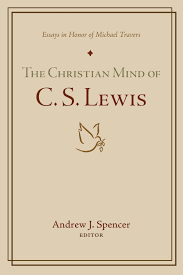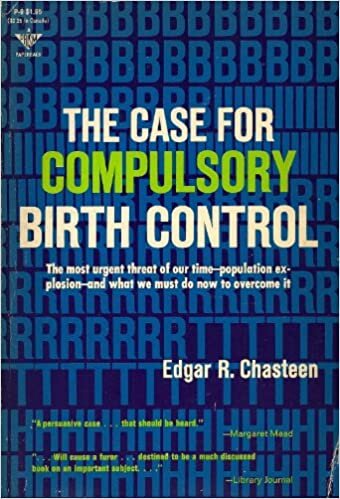Recovering the Lost Art of Reading - A Review
Mortimer Adler’s How to Read a Book is a classic introduction to the art of reading. It’s a favorite among homeschoolers and careful thinkers who have wanted to learn how to wrestle with ideas critically and thoroughly. Decades after the first edition was published, there is still a lot to commend it to readers. There is still much to be commended.
But I now have a new top book to recommend for those seeking to learn how to read better and to teach others to read better.
Leland Ryken and Glenda Faye Mathes teamed up to write Recovering the Lost Art of Reading to provide both encouragement and instruction in the practice of consuming literature in various genres.
The book begins with an explanation of the problem. Fewer people are reading books and they tend to read them carelessly. It’s not that fewer people are reading, because the flood of short internet articles ensure that people are taking in information and ideas through words. At the same time, the careful perusal of literature and well-written nonfiction in longform is an artform that fewer seem to be mastering.
Anecdotally, I have met more and more teens who have never read a single book in full, and I have had adults brag they haven’t cracked open a volume in a decade. Meanwhile, total sales of books are up, but I have to wonder what part the frequent sales on ebooks and the habits of prolific readers have to do with that trend. There is evidence that reading on screens is less effective than reading actual books.
The chief problem with a reduced rate of reading good books well is that books that have stood the connect us to our shared human heritage. In many cases these volumes are being ignored because of cultural concerns or because reading them is simply hard work.
When the culture loses touch with the artifacts of its past we lose voices that can keep us from making old mistakes again, voices that call us to a deeper sense of beauty, and voices that connect us to minds from the past. As Alan Jacobs notes in his book, Breaking Bread with the Dead, when people stop reading “classics” (for whatever reason) we could be dragged back toward the past we long to avoid.
Recovering the Lost Art of Reading helps to remedy the lack of reading by providing accessible instruction about how to read well. So, the second (and far longer) part of the volume offers something of a primer on reading. It begins with a discussion of literature, its significance, and its benefits. Next, introduction to various genres with helpful instructions for reading each type of material well. After these helpful chapters on theory, Mathes and Ryken shift gears in Part Three to a mix of practical instruction and exhortation on recovering the art of reading, where they connect reading to the true, the good, and the beautiful. The pursuit of these is foundational to a well-lived life and a Christian life that seeks to recognize God at work in the world across cultures.
One of the notable features about the book is that there is a focus on a particularly Christian approach to reading. So, their chapter on the Bible as literature describes the process of reading Scripture for its beauty, form, and creativity as something that is spiritually significant. Similarly, the persistent concern for the moral exercise of reading is not primarily about academic virtue, but about putting on the mind of Christ by encountering truth, goodness, and beauty in transcultural forms.
The self-description of the book is apt. The authors write, “[This is] a guidebook by two season and enthusiastic reading travelers, who show all readers . . . how to discover more delight in the reading journey.” This is not an academic volume, though it has academic value. It is not a prescriptive “how to” like Adler’s book. It is filled with instruction, but it is not purely didactic. It’s the sort of book that can be read piecemeal as someone tries to grow in the art of reading. It’s also the sort of book that can be used as a textbook in a high school or introductory college literature class. It would also be useful as a companion to a reading group. Most significantly, it’s a book that will help its reader grow in their love of the better things in life.
The unfortunate reality is that those that really need to read this volume—the truly reluctant readers—are unlikely to pick it up. But the casual reader can benefit and the seasoned reader can deepen their love for the practice. With so many distractions, in the form of funny internet videos and short blog articles, this book may not win as many as it should. However, the audience that it does reach will be improved and deepened in their understanding of literature, their love of reading, and their love of God.
As someone who loves reading, I found this book refreshing. Instead of providing rigid rules about book lists, types of reading, etc., we get a volume about taking delight in reading and growing through the process.
The self-description of the book is apt. The authors write, “[This is] a guidebook by two season and enthusiastic reading travelers, who show all readers . . . how to discover more delight in the reading journey.” This is not an academic volume, though it has academic value. It is not a prescriptive “how to” like Adler’s book. It is filled with instruction, but it is not purely didactic. It’s the sort of book that can be read piecemeal as someone tries to grow in the art of reading. It’s also the sort of book that can be used as a textbook in a high school or introductory college literature class. It would also be useful as a companion to a reading group. Most significantly, it’s a book that will help its reader grow in their love of the better things in life.
The unfortunate reality is that those that really need to read this volume—the truly reluctant readers—are unlikely to pick it up. But the casual reader can benefit and the seasoned reader can deepen their love for the practice. With so many distractions, in the form of funny internet videos and short blog articles, this book may not win as many as it should. However, the audience that it does reach will be improved and deepened in their understanding of literature, their love of reading, and their love of God.
As someone who loves reading, I found this book refreshing. Instead of providing rigid rules about book lists, types of reading, etc., we get a volume about taking delight in reading and growing through the process.















Reading your Bible is a battle. There’s a reason why Paul lists Scripture as the sword of the Spirit in his discussion of the armor of God (Eph. 6:17). More even than that, Scripture reveals God’s character and is, thus, central to worshiping well (Psalm 119). That’s why reading the Bible is a battle.